spaceflight
Latest
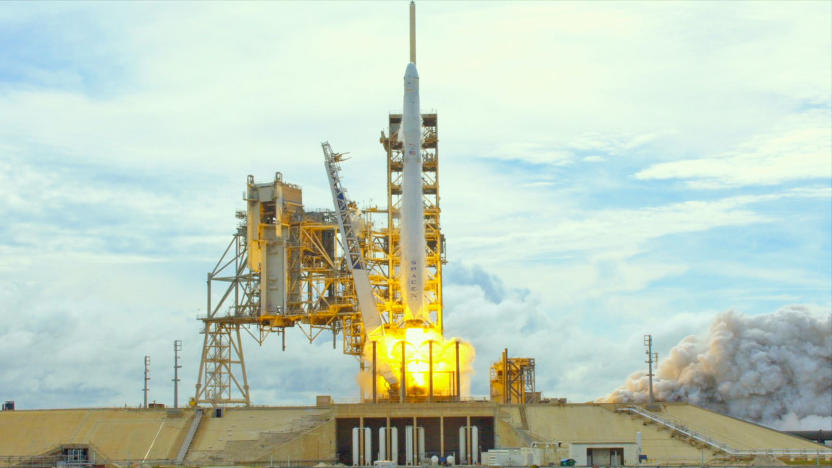
SpaceX re-launches a Dragon capsule for the first time
SpaceX is no longer limited to reusing rockets -- it's reusing capsules, too. The private spaceflight outfit has launched a refurbished Dragon cargo capsule (namely, one last used in September 2014) as part of a resupply mission to the International Space Station. While the vehicle isn't as complex as a Falcon 9, this shows that it can endure multiple launches (SpaceX is targeting three) without a hitch. That's important for reducing the overall costs of spaceflight, especially when manned Dragon missions become a reality.

Spaceflight Bill paves the way for a UK spaceport in 2020
Space isn't just big, it's big business. According to the government, the UK's space industry is already worth more than £13.7 billion to the economy, but one thing's missing: The infrastructure needed to send the next satellite or experiment up into the void from British shores. Plans to grow the commercial space sector have been under way for some time, and several potential sites for the UK's (and potentially Europe's) first spaceport have already been proposed. But before you can shoot for the stars, you have to regulate, which is the intention of the Draft Spaceflight Bill introduced today.

Virgin Galactic's new spaceship completes its first glide test
Virgin Galactic just came much closer to resuming its dreams of private spaceflight in the wake of its tragic crash from 2014. The company has successfully conducted the first glide test flight for VSS Unity, better known as the new SpaceShipTwo. The vehicle was only flying free for 10 minutes and never traveled faster than Mach 0.6, but that was enough to get a healthy amount of data illustrating how Unity behaves in real life.

NASA demonstrates EM Drive theory, but don't get too excited
A fuel-free engine is the stuff of science fiction for now, but scientists at NASA Eagleworks have published a peer-reviewed paper that suggests the ideas behind an EM Drive are worth testing further. Researchers at Eagleworks, a small NASA team tasked with testing humanity's wildest theories of spaceship propulsion, were able to produce thrust without any kind of propellant, in a vacuum, as they published this weekend in ARC.
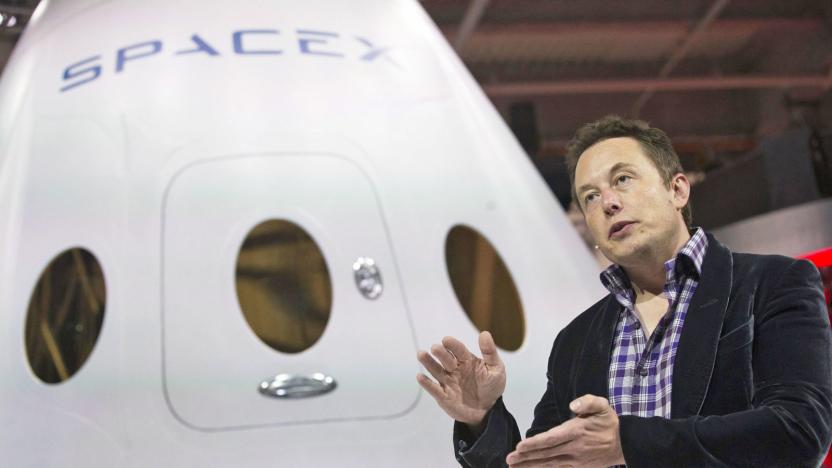
Elon Musk answers your SpaceX questions on Reddit at 6PM Eastern
SpaceX has raised more questions than it has answered as of late. Just how will it finance its plan to colonize Mars? Can it improve the reliability of its rockets? And exactly when will it reuse a rocket? You might just get some answers. Company founder Elon Musk is holding a Reddit Ask Me Anything session for SpaceX today (October 23rd) at 6PM Eastern. There's no guarantee that he'll produce any stunning revelations, but we wouldn't rule out a few surprises... or at least, answers to questions that don't usually come up at media events. Just be sure to get in your inquiries quickly, since the AMA is bound to get plenty of inquiries.
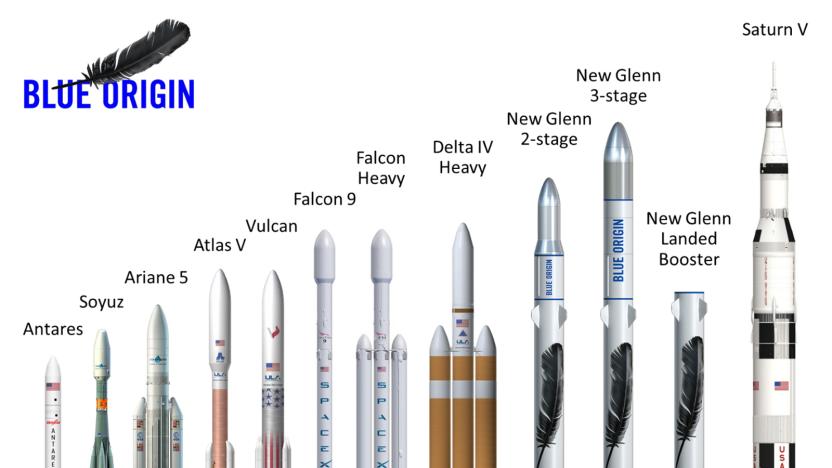
Jeff Bezos' next rocket is a massive, reusable booster
Jeff Bezos isn't about to let SpaceX have the private heavy-duty rocket field to itself. Blue Origin has introduced New Glenn (named after astronaut John Glenn), a massive reusable booster rocket that makes SpaceX's Falcon Heavy look modest. The two-stage model already dwarfs the Falcon at 270 feet tall, while the three-stage version is nearly as tall as the legendary Saturn V at 313 feet. Yes, it's more than a little Freudian, but it'll be helpful getting both satellites and people into space.

Russia hopes 'clean' rockets are the future of spaceflight
If you ask Russia, modern rockets are hindered by not just their engines, but their fuel -- the chemicals just aren't powerful enough to carry increasingly heavier loads and keep costs in check. To that end, the country's Advanced Research Foundation has conducted what it says is the first successful test of a full-size pulse-detonation engine (where rapid-fire detonation waves combust the fuel and oxidizer) running "clean" fuel. The oxygen-kerosene mix isn't so much eco-friendly (although it does burn more cleanly) as very efficient. Its high thermodynamic performance, combined with the extra efficiency of pulse-detonation itself, would let rockets either carry more cargo into space or reduce costs by getting vehicles into orbit faster.
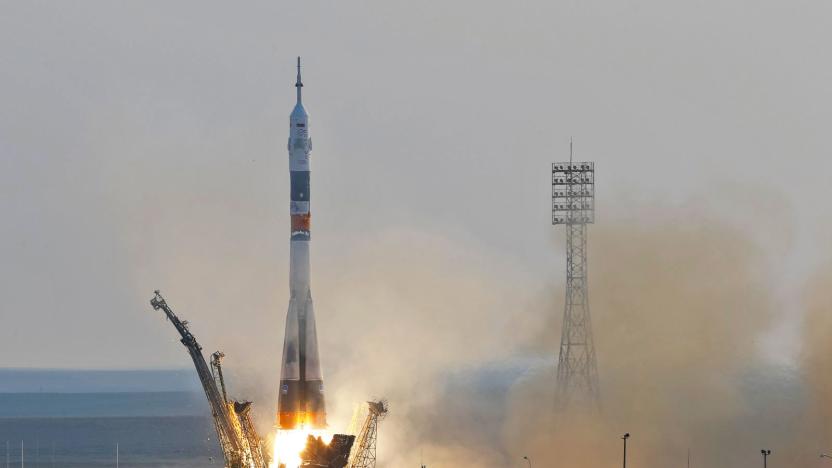
Super-resilient ceramic could be the key to future spacecraft
Vehicles like the Space Shuttle have used ceramic tiles to thwart heat during reentry, but it has its limits. It can only get so hot, which can force you to use different materials -- and you can forget about using near an engine. Russia's Tomsk State University wants to change that. It's developing a ceramic whose multiple layers (based on hafnium carbide, zirconium diboride and zirconium oxide) can survive temperatures over 5,400F (3,000C). Even the best metal alloys can't usually handle more than 3,600F (2,000C), the university says.
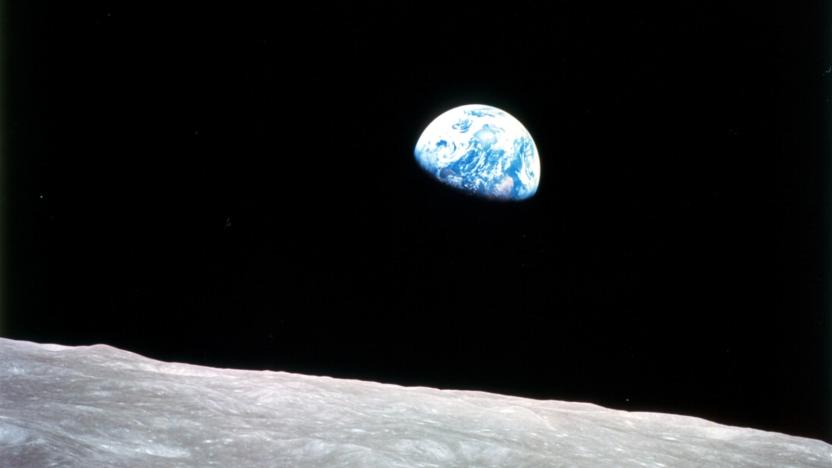
US grants its first clearance for a private flight to the Moon
If you're running a private American company that wants to send payloads to the Moon, who do you talk to in order to get the all-clear? Moon Express knows -- it just got the first-ever clearance from the FAA's Office of Commercial Space Transportation for a flight to the Moon. The move, which included consultation with NASA, the State Department and the White House, lets Moon Express deliver a robotic lander (including scientific experiments and cremated remains) to the lunar surface in 2017. The approval doesn't require any new laws, although NASA will advise the company during its mission.

NASA orders a second ISS crew delivery from SpaceX
It's been awhile since NASA has sent an astronaut to the stars from domestic soil, but it could be come commonplace soon enough. Today, the space agency announced that it ordered a second ISS crew rotation mission from Elon Musk's SpaceX. This is the fourth flight NASA has ordered through its Commercial Crew Transportation Capability contracts, and a big step forward towards eliminating the space agency's reliance on Russia for crew rotation.

Super-fast magnetic motor keeps tiny satellites on track
Satellites often rely on reaction wheels, or constantly spinning flywheels, to tweak their attitudes without using precious fuel. However, they tend to be very delicate -- since they use ball bearings, they spin relatively slowly (under 6,000RPM), take up a lot of space, need tightly controlled environments and aren't very precise. Thankfully, researchers at Celeroton have a better way. They've created a magnetically levitated motor that achieves the effect of a regular reaction wheel with virtually none of the drawbacks. Since its rotor floats in a magnetic field, it can spin much faster (up to 150,000RPM) without wearing out, creating vibrations or requiring a special, lubricated environment. And given that it produces the same angular momentum as a much larger reaction wheel, it's perfect for CubeSats and any other tiny satellite where internal space is at a premium.
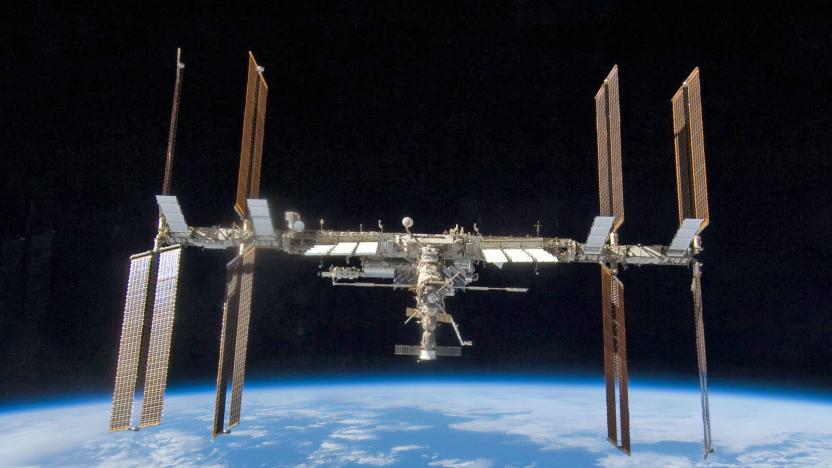
NASA wants more private uses of the International Space Station
NASA doesn't just see the International Space Station as a place where government space agencies can work together in harmony -- it could be a business hub, too. The agency has put out a call for ideas that could increase commercial use of the ISS. Those private outfits have potential uses that researchers hadn't imagined, NASA says. They could likely take better advantage of the "unique capabilities" of the low-Earth orbit facility, such as hooking up to underused attachment ports.
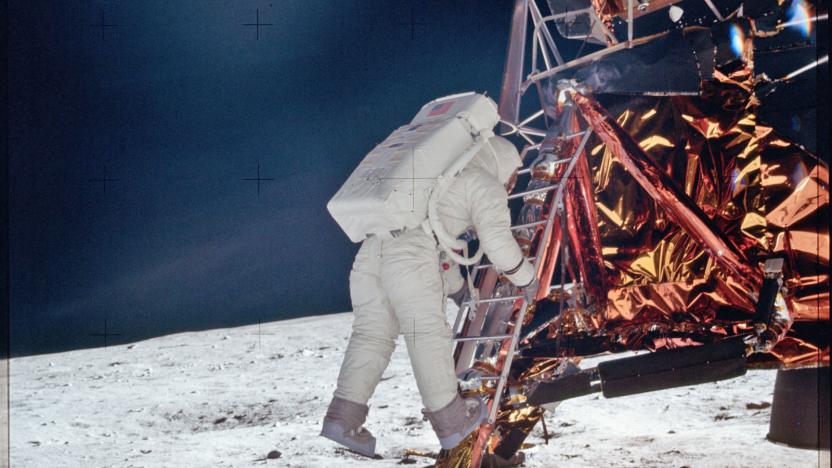
Apollo 11's source code is now on GitHub
The source code for Apollo 11's guidance computer has been available for a while (Google hosted it several years ago, for instance), but would you know how to find it or search through it? As of this week, it's almost ridiculously easy. Former NASA intern Chris Garry has posted the entire Apollo Guidance Computer source code on GitHub, giving you a good peek at the software that took NASA to the Moon. As Reddit users point out, it's clear that the developers had a mighty sense of humor -- line 666 of the lunar landing turns up a "numero mysterioso," and there's even a reference to radio DJ Magnificent Montague's classic "burn, baby, burn."

India successfully tests first tiny reusable space shuttle
India's space agency is celebrating today after successfully launching and recovering RLV-TD, a prototype reusable space vehicle. The craft was launched at 9:00am local time and rose 43 miles into the air before gliding back down, making a safe landing in the Bay of Bengal. As promising as it sounds, the test craft won't be offering any passenger launches just yet, since it was a seven meter long scale model. Still, now that India has demonstrable proof that its shuttle design works, it could set its sights towards becoming a space power like the US, Russia and China.
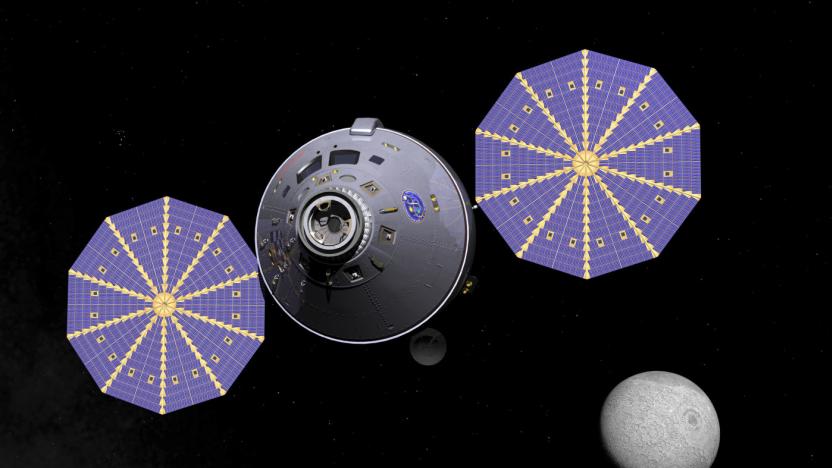
NASA picks solar power candidates for deep space missions
NASA is going to need solar power if it wants to keep its future deep space missions running, and that means getting someone to build that light-gathering technology. Fortunately, the agency has some partners lined up. It just picked four solar power technology proposals that could find their way into spacecraft traveling as far as Mars. The outfits negotiating deals are definitely ones you'll know -- ATK, Boeing, Johns Hopkins University and NASA's own Jet Propulsion Laboratory are all developing systems that collect solar energy in the unforgiving conditions beyond Earth.

Virgin Galactic taps fashion brand Y-3 for space suit designs
If you set out to do something incredible, you should do it looking your best. For Virgin Galactic, the commercial spaceflight venture from Richard Branson, that means teaming up with fashion brand Y-3 to create apparel for its future pilots, astronauts and on-the-ground team operations members. In case you're not familiar, Y-3 is a collaboration between Adidas and Yohji Yamamoto, a decorated and well-respected Japanese designer.
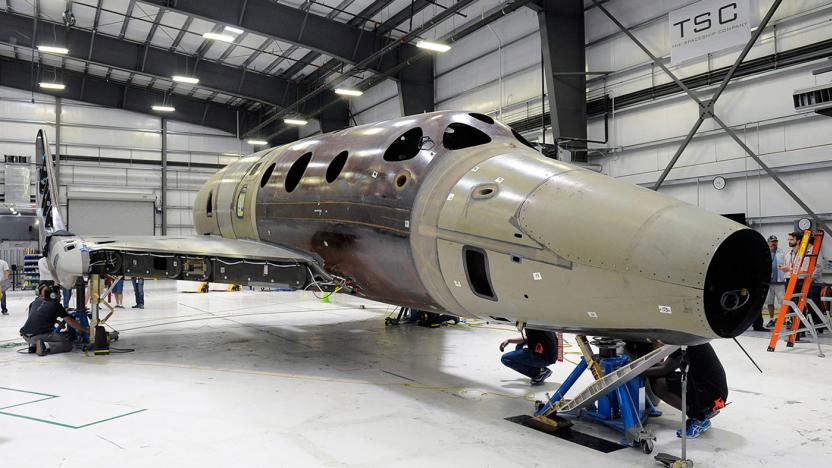
Virgin Galactic debuts the next SpaceShipTwo on February 19th
Virgin Galactic is still reeling from the tragic loss of a crew member in its 2014 SpaceShipTwo crash, but it's nearly ready to soldier on. The private spaceflight pioneer is rolling out and naming the second version of SpaceShipTwo on February 19th, roughly 15 months following the accident. The new machine is largely similar to its predecessor, but it reflects the lessons learned from its predecessor: it has safety measures that should prevent the tail booms from extending prematurely and throwing the craft out of control.

Vladimir Putin dissolved Roscosmos, Russia's federal space agency
With the flourish of a pen earlier today, Russian president Vladimir Putin officially put an end to Roscosmos, the country's federal space agency. That decree capped off over a year's worth of organizational despair as the agency saw its ten-year budget cut (again), the loss of a handful of spacecraft and the misuse of over 92 billion rubles (or $1.8 billion) in part thanks to a pervasive culture of corruption. Don't worry about the country's spacebound ambitions, though — Roscosmos will be reborn as a state-run corporation on January 1.

President signs pro-asteroid mining bill into law
And just like that, American asteroid mining efforts are legal. President Obama has signed the US Commercial Space Launch Competitiveness Act (CSLCA) into law following Congress' approval, letting companies keep whatever resources they collect beyond Earth. As you might imagine, hopeful mining outfits like Planetary Resources are relieved. While the odds weren't that high that the government would confiscate their minerals as soon as they landed, the Act removes any ambiguity.

China and the US create a 'space hotline' to avoid conflicts
The Kremlin and the White House famously established a hotline between each other during the Cold War to avoid annihilating each other by mistake, and history is repeating itself now that China is a powerhouse. China and the US have set up a "space hotline" to prevent orbital mishaps and misunderstandings from leading to conflicts. They previously had to go through each other's diplomatic channels -- a big problem when there's an imminent satellite collision or rocket test. Now, they should know the truth right away.






